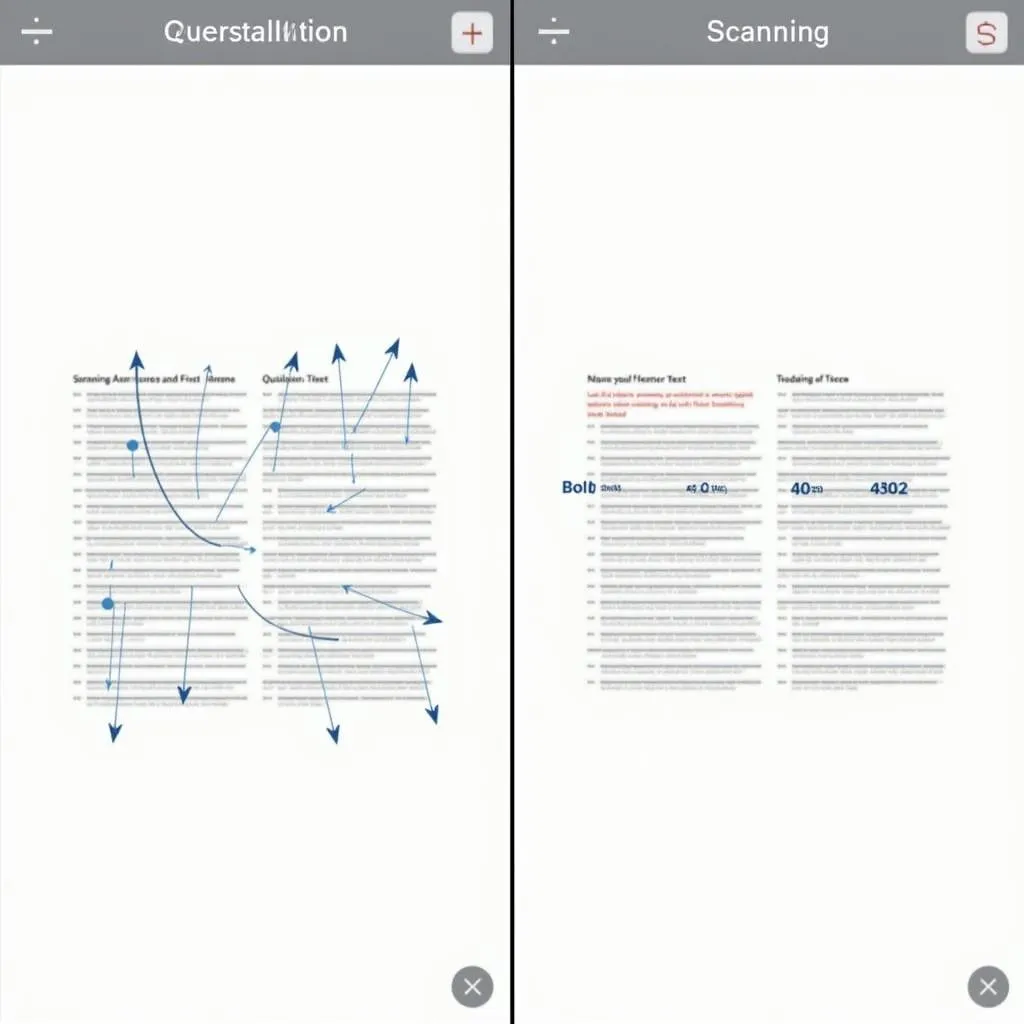Skimming and scanning are essential skills for achieving high scores in the PTE Academic exam, particularly in the reading section. These techniques allow test-takers to quickly extract key information from texts, saving precious time and improving overall performance. In this guide, we’ll explore effective strategies to practice and perfect your skimming and scanning abilities for PTE success.
Understanding Skimming and Scanning
Before diving into practice techniques, it’s crucial to understand the difference between skimming and scanning:
Skimming: The Big Picture Approach
Skimming involves quickly reading through a text to get a general idea of its content. It’s like taking a bird’s eye view of the information, focusing on:
- Headings and subheadings
- First and last sentences of paragraphs
- Bold or italicized text
- Visual elements like charts or graphs
Skimming is particularly useful for tasks like multiple-choice questions and summarizing written text in the PTE reading module question types overview.
Scanning: The Treasure Hunt Method
Scanning is the process of searching for specific information within a text. It’s akin to using a magnifying glass to find particular details, such as:
- Dates and numbers
- Names and places
- Key terms related to the question
- Specific facts or figures
Scanning is invaluable for tasks like fill in the blanks and re-order paragraphs in the PTE reading section.
 Comparison of skimming and scanning techniques for PTE reading
Comparison of skimming and scanning techniques for PTE reading
Effective Strategies to Practice Skimming
-
Set a Timer: Start with short passages and give yourself limited time to skim. Gradually increase text length and decrease time as you improve.
-
Focus on Structure: Train your eyes to quickly identify headings, topic sentences, and concluding statements. These elements often contain the main ideas.
-
Use a Finger or Pen: Guide your eyes down the page, moving quickly but steadily. This helps maintain focus and pace.
-
Practice with Varied Texts: Expose yourself to different types of texts, from academic articles to news reports, to enhance your versatility.
-
Summarize After Skimming: Challenge yourself to write a one-sentence summary after skimming. This reinforces comprehension and retention.
Dr. Emily Chen, a renowned PTE coach, emphasizes the importance of regular practice: “Skimming is like a muscle. The more you exercise it, the stronger and more efficient it becomes. I recommend my students practice skimming for at least 15 minutes daily.”
Honing Your Scanning Skills
-
Know Your Target: Before scanning, clearly identify what specific information you’re looking for. This focuses your search and improves efficiency.
-
Use Keywords: Highlight or underline key terms from the question to guide your scanning process.
-
Utilize Text Features: Pay attention to formatting cues like bold text, italics, or bullet points that might indicate important information.
-
Practice with Timed Drills: Set up scanning exercises where you search for specific details within a time limit. This simulates exam conditions and improves speed.
-
Develop a Zigzag Technique: Move your eyes in a zigzag pattern down the page to cover more text quickly.
 Zigzag scanning technique for PTE reading
Zigzag scanning technique for PTE reading
Professor David Thompson, an expert in language assessment, notes: “Effective scanning is about training your brain to filter information rapidly. It’s a skill that not only helps in PTE but also in academic and professional settings.”
Integrating Skimming and Scanning in PTE Practice
To maximize your PTE exam preparation for advanced learners, it’s crucial to combine skimming and scanning techniques:
- Start with Skimming: Get an overview of the text structure and main ideas.
- Read the Questions: Understand what specific information you need to find.
- Scan for Answers: Use your scanning skills to locate the required details.
- Confirm and Review: Double-check your findings against the questions.
This integrated approach ensures you’re not only fast but also accurate in your responses.
Practical Exercises to Enhance Your Skills
-
News Article Challenge: Take a news article and give yourself 30 seconds to skim it. Then, answer basic questions about the main topic and key points.
-
Academic Abstract Analysis: Practice scanning academic paper abstracts to quickly identify research objectives, methods, and conclusions.
-
Timed Paragraph Ordering: Jumble paragraphs from a text and time yourself as you reorder them based on skimming for logical flow and coherence.
-
Keyword Scavenger Hunt: Create a list of keywords and challenge yourself to find them in a lengthy text as quickly as possible.
-
Mixed Question Types Drill: Combine multiple-choice, fill-in-the-blanks, and true/false questions to practice switching between skimming and scanning as needed.
Dr. Sarah Powell, a cognitive psychologist specializing in reading comprehension, advises: “Variety in practice is key. By exposing yourself to different text types and question formats, you’re preparing your brain to adapt quickly in the actual PTE exam.”
Overcoming Common Challenges
Many test-takers struggle with anxiety and time management when applying skimming and scanning techniques. Here are some tips to overcome these challenges:
- Practice Mindfulness: Brief meditation or deep breathing exercises before practice sessions can help reduce anxiety and improve focus.
- Track Your Progress: Keep a log of your practice results to visualize improvement over time, boosting confidence.
- Simulate Exam Conditions: Regularly practice under timed conditions to build stamina and reduce stress during the actual test.
Remember, mastering these skills takes time and consistent effort. Be patient with yourself and celebrate small improvements along the way.
 Ideal PTE reading practice setup
Ideal PTE reading practice setup
Conclusion
Skimming and scanning are indispensable skills for PTE success, particularly in the reading module. By consistently practicing these techniques and integrating them into your study routine, you’ll significantly enhance your speed, accuracy, and overall performance in the exam. Remember to utilize resources like PTE reading tips and tricks and PTE reading module official tips to complement your practice. With dedication and the right strategies, you’ll be well-equipped to tackle the PTE Academic reading section with confidence.
FAQ
-
How long should I practice skimming and scanning each day?
Start with 15-20 minutes daily and gradually increase as you become more comfortable. Consistency is key for improvement. -
Can skimming and scanning skills be applied to other PTE sections?
Yes, these skills are particularly useful in the reading section but can also help in quickly processing information in the listening and writing sections. -
What types of texts are best for practicing skimming and scanning?
Use a variety of texts including academic articles, news reports, and PTE-style passages to prepare for different scenarios in the exam. -
How can I improve my accuracy while maintaining speed?
Regular practice and gradually increasing difficulty will help. Also, focus on understanding question types to know exactly what information to look for. -
Are there any digital tools that can help me practice these skills?
Yes, many PTE preparation apps and websites offer timed reading exercises specifically designed to improve skimming and scanning abilities. -
How do I know if I’m improving my skimming and scanning skills?
Track your speed and accuracy over time. If you’re able to answer questions correctly in less time, you’re making progress. -
Can over-relying on skimming and scanning negatively impact my comprehension?
While these techniques are valuable, it’s important to balance them with thorough reading when necessary. Develop the judgment to know when to skim/scan and when to read in-depth.